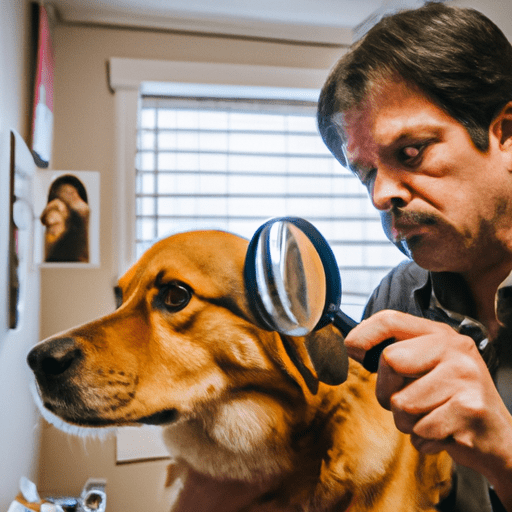As a dedicated caregiver, noticing blood in your dog’s stool can be quite alarming. While it’s certainly a cause for concern, it’s important to remember that not all instances of blood in a dog’s stool signify a dire condition. Let’s delve into what exactly this symptom could mean, what might cause it, and how it can be addressed.
H2: Understanding Hematochezia and Melena
When you see blood in your dog’s stool, it can come in two forms: bright red blood (Hematochezia) or black, tarry stool (Melena).
-
Hematochezia is usually an indication of lower gastrointestinal bleeding, often from the colon or rectum. It’s fresh and therefore maintains its red color.
-
Melena, on the other hand, is digested blood. This comes from higher up in the digestive system, such as the stomach or small intestines. The blood becomes black and tarry due to the process of digestion.
H2: Possible Causes of Blood in Dog’s Stool
There are numerous potential causes for blood in a dog’s stool, ranging from minor issues to serious health conditions. Here are some of the most common:
- Dietary Indiscretion: Dogs are curious creatures and often eat things they shouldn’t. Consuming something inappropriate can irritate the gastrointestinal tract and result in blood in the stool.
- Parasites: Various parasites like hookworms, roundworms, and giardia can cause bloody stools in dogs.
- Infections: Bacterial or viral infections can inflame the gastrointestinal tract, leading to bloody stools.
- Trauma: Any injury to the lower digestive tract can result in bloody stools.
- Tumors: In more serious cases, bloody stools could indicate a tumor in the gastrointestinal tract.
| Cause | Description |
|---|---|
| Dietary Indiscretion | Eating inappropriate items |
| Parasites | Infection caused by hookworms, roundworms, or giardia |
| Infections | Bacterial or viral infections in the gastrointestinal tract |
| Trauma | Injury to the lower digestive tract |
| Tumors | Presence of a tumor in the gastrointestinal tract |
H2: Diagnosis and Treatment of Blood in Dog’s Stool
The first step is to get a proper diagnosis from a vet. They will likely conduct a physical examination, review the dog’s medical history, and perform tests like a fecal examination, blood tests, or imaging studies. The treatment will depend on the underlying cause.
If the cause is dietary indiscretion, for instance, the vet may recommend a bland diet and observe the dog’s condition. For parasites or infections, medication will probably be prescribed. In the case of trauma or tumors, surgery might be necessary.
H2: Preventing Blood in Dog’s Stool
Preventing bloody stools in dogs largely revolves around maintaining a healthy lifestyle for your pet.
- Proper Diet: Feeding your dog a balanced and appropriate diet can prevent dietary indiscretion.
- Regular Vet Visits: Regular check-ups can identify potential issues early.
- Preventative Medications: Regular deworming and flea/tick control can prevent parasitic infections.
- Safe Environment: Keeping your environment safe can prevent accidental ingestion of harmful substances or trauma.
FAQ Section
Q: Is blood in a dog’s stool always a sign of a serious problem?
A: Not always. While it’s certainly a sign that something is wrong, the cause could be as simple as your dog eating something they shouldn’t have.
Q: Should I take my dog to the vet immediately if I see blood in their stool?
A: Yes, it’s always a good idea to consult with a vet if you notice any significant changes in your dog’s health.
Q: Can I treat bloody stools in dogs at home?
A: It’s not recommended. The cause of the blood could be a serious condition that requires professional treatment.
Q: Can a change in diet cause blood in a dog’s stool?
A: Yes, a sudden change in diet can cause digestive upset, which may result in bloody stools.
Seeing blood in your dog’s stool is certainly alarming, but remember, as a caregiver, your calm and prompt actions can greatly help. Always consult with a vet for proper diagnosis and treatment.



